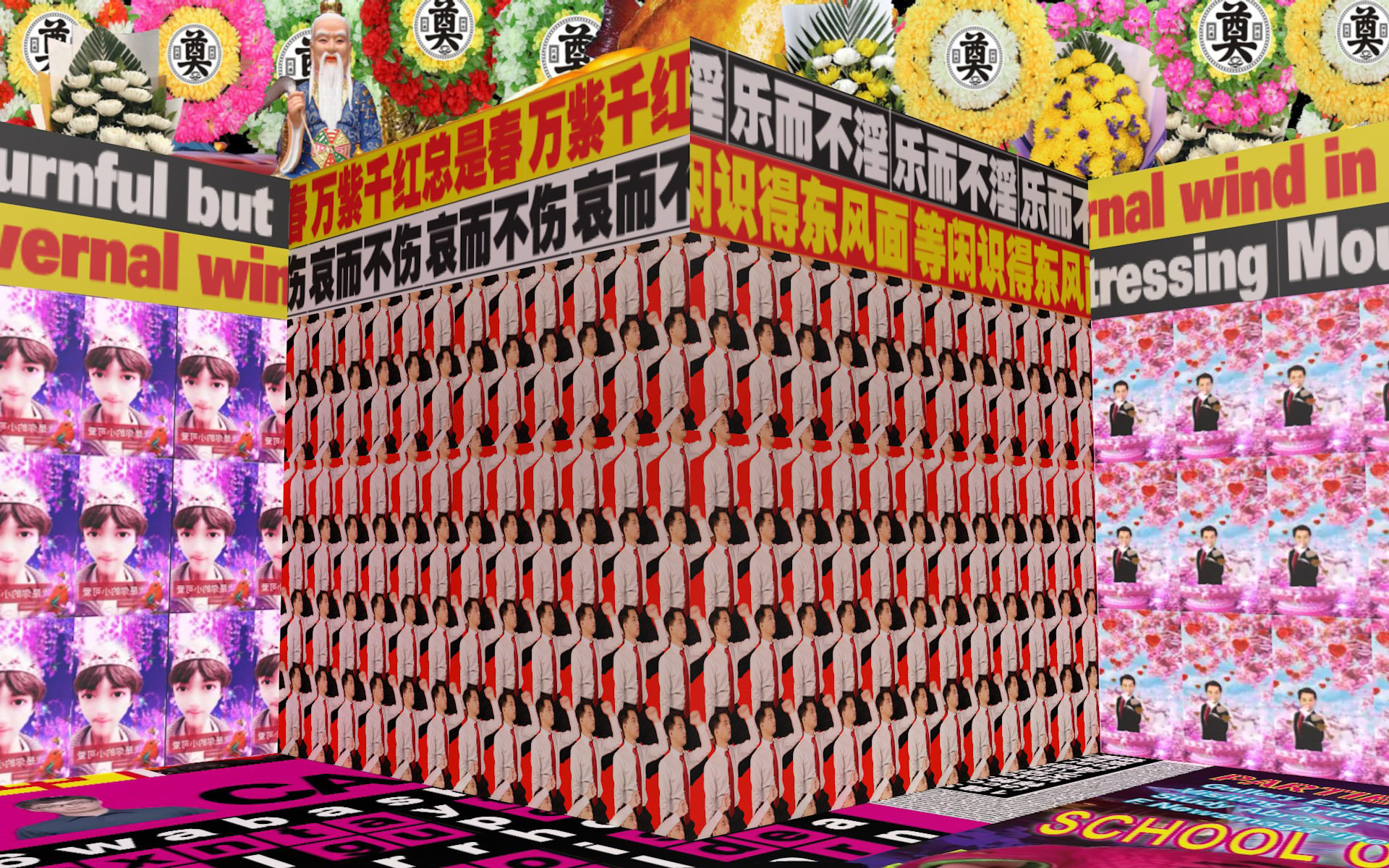Digital Existence is a series where we explore how technology and the internet impact everyday people’s lives in China and beyond.
When your electronic devices get old, malfunction, and eventually die after years of service, what do you do? You get a new one, of course.
But how do you deal with old electronics, as well as the digital memories and life experiences associated with them?
One option is to mail them to Chen Xingyi, a 21-year-old designer who disassembles and regroups electronic waste — aka e-waste — into works of art.

Chen Xingyi made Apple’s first-generation mobile phone into artwork
Digital Memories
Chen started making art from electronic components near the end of 2019 after his first start-up — a bubble tea shop — went out of business.
To memorialize the experience, Chen took apart the iPhone 4 that he used for delivery orders and framed its components for posterity’s sake.

Chen Xingyi framed his iPhone 4 to memorialize his first start-up
“I finished the piece around sunset, so I went to the rooftop and took a few photos of it,” Chen says. “I think it’s artistic, eco-friendly, and a meaningful way to keep memories and emotions.”
He posted the pictures on Taobao, China’s biggest ecommerce platform. A few days later, Chen got his first order.

A Nintendo Switch framed by Chen Xingyi
The first one wasn’t very successful though, he tells RADII. Like his original creation, it was also a piece made up of smartphone parts, but the components fell off during shipping.
The customer had to glue them back himself before giving the artwork away as a birthday gift.
Now, after hundreds of trials, Chen has managed to solve this challenge and others. He uses specialized glues for different electronic parts and settled on wooden frames to consolidate the artwork.
So far, Chen has made art pieces out of smartphones, watches, tablets, cameras, Walkmans, laptops and more. In the beginning, he had to look up disassembly tutorials for each item. Now he can generally dismantle an object just by looking at it.

Chen Xingyi says he hopes his gadget-focused art can help people keep memories and combat e-waste
Chen charges different prices for each piece, ranging from 598 RMB (around 92 USD) to more than 1,000 RMB, depending on the complexity of the design and level of customization.
Most of his clients are young men from China’s first- or second-tier cities, who typically have higher living standards and more attachment to electronics.
Of the various deconstructed devices he creates, Chen says smartphones are the most common order, while cameras are among the most difficult to work with because they contain so many tiny parts.

Chen Xingyi recently made an art piece out of an ASUS Automobili Lamborghini laptop
The most expensive personal belonging he has worked on so far is an ASUS Automobili Lamborghini laptop, valued at thousands of dollars.
Still, Chen has much larger, pricier aspirations: he wants to dismantle a car and turn it into wall art.
E-Waste and Destiny
Born and raised in Zhejiang, a coastal province in eastern China known for its booming private sector, Chen had an entrepreneurial spirit from a young age.
Since he was 16, he has helped at his family’s hardware store and managed their shop on Taobao.
“I’m always more interested in learning practical skills rather than textbook lessons,” he says. “In this digital age, degrees are not that important to become successful and make a lot of money.”
Chen didn’t perform well in school, but he graduated from a higher vocational school with a degree in graphic design. He was never employed in the industry, though, instead working a short stint in a restaurant before his failed boba shop venture.
“I don’t want to lose my hair,” Chen says jokingly, referring to the high pressure in China’s advertising industry.
Speaking of his current business, Chen says the job was “written in his destiny,” as it combines his design background and interest in ecommerce.

Chen Xingyi spends most of his day in front of the desk in his living room. He shares the workspace with his parents, who also mainly work from home
Chen does everything himself, including customer services, design, dismantling, framing, photographing, editing, and packaging. That often means working 11, and sometimes up to 16 hours a day. On average, he produces at least 10 works per month.
“I often get contacted by clients at night, and I try to reply or adjust my design based on their feedback as soon as possible,” Chen says. “I want to focus on my career these two years. All the pictures in my phone are my design works.”
As an introvert, he says he doesn’t mind spending hours at his desk and only communicating with customers online.
He likes to listen to classic Cantopop songs from the 1980s and have a drink while working, especially at night, when he feels more creative.

A framed Apple Watch S1 by Chen Xingyi
The young designer also gets anxious at night, however, and sometimes has trouble sleeping. Chen says he is too busy with day-to-day work to think about his future.
“I’m always sitting there and working. I feel like I’m in prison, that I’m stuck at my desk, and my brain is limited,” he says.
But overall, Chen is hopeful about his artwork.
“E-waste art is still a niche field in China, and a lot of people don’t know about it,” he says. “It’s a new way to deal with e-waste. I think this industry has a potential market, and it is a growing trend.”
All photos courtesy of Chen Xingyi


















